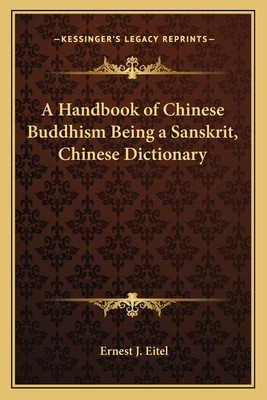
- We will send in 10–14 business days.
- Author: Ernest J Eitel
- Publisher: Kessinger Publishing
- ISBN-10: 1162757205
- ISBN-13: 9781162757209
- Format: 15.2 x 22.9 x 1.3 cm, minkšti viršeliai
- Language: English
- SAVE -10% with code: EXTRA
A Handbook of Chinese Buddhism Being a Sanskrit, Chinese Dictionary (e-book) (used book) | bookbook.eu
Reviews
Description
1888. With Vocabularies of Buddhist Terms in Pali, Singhalese, Siamese, Burmese, Tibetan, Mongolian and Japanese. From the Preface: The student of Chinese religious literature finds himself at almost every step hampered by the continual recurrence of Sanskrit and other foreign terms embedded in the text, generally without a word of explanation. These form a series of vexatious riddles for a clue to which one has to go beyond the range of a Chinese library. This is especially the case with Buddhist works, many of which are simply translations from Sanskrit or Pali or Tibetan originals. Hence arises the need of a Dictionary like the present which aims at smoothing the pathway to an understanding of Buddhism and of native religions influenced by it.
EXTRA 10 % discount with code: EXTRA
The promotion ends in 22d.22:22:33
The discount code is valid when purchasing from 10 €. Discounts do not stack.
- Author: Ernest J Eitel
- Publisher: Kessinger Publishing
- ISBN-10: 1162757205
- ISBN-13: 9781162757209
- Format: 15.2 x 22.9 x 1.3 cm, minkšti viršeliai
- Language: English English
1888. With Vocabularies of Buddhist Terms in Pali, Singhalese, Siamese, Burmese, Tibetan, Mongolian and Japanese. From the Preface: The student of Chinese religious literature finds himself at almost every step hampered by the continual recurrence of Sanskrit and other foreign terms embedded in the text, generally without a word of explanation. These form a series of vexatious riddles for a clue to which one has to go beyond the range of a Chinese library. This is especially the case with Buddhist works, many of which are simply translations from Sanskrit or Pali or Tibetan originals. Hence arises the need of a Dictionary like the present which aims at smoothing the pathway to an understanding of Buddhism and of native religions influenced by it.


Reviews